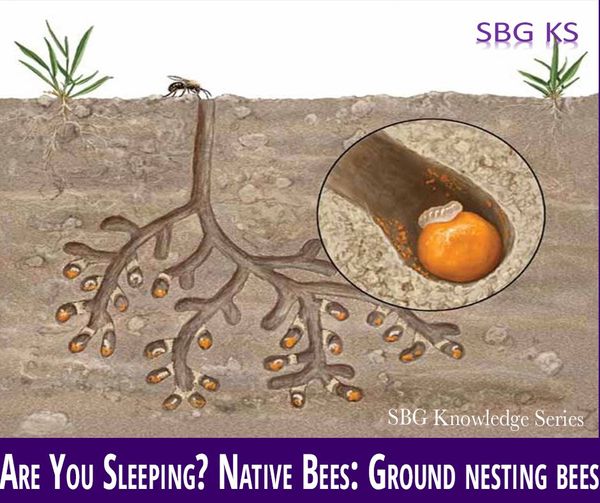70% of our hard-working native bees are ground nesting, constructing shallow tunnels in areas of bare ground or sand. For example, the nest of the mining bee (Andrenidae) contains individual chambers which she will stock with “bee bread”—a mixture of pollen, nectar, and saliva. Her saliva is an important ingredient, providing protection against bacterial and fungal infections (similar to the way in which ‘mother’s milk’ boosts human babies’ immune systems.) The egg is laid directly on this pollen ball. Mom will be long gone, but in each cell, she’s left behind
everything the larva will need for its growth. It will pupate and pass the winter in its snug underground home, emerging as an adult in the spring.
These super-efficient little pollinators may be out of sight in your pollinator garden—but do keep them in mind! Areas of bare soil or sand that aren’t prone to flooding are essential for their nest sites. And in the fall, hold the mulch ; bees need bare soil for digging, and an inch or two of mulch dumped on top of an existing nest site will suffocate any bees present. Instead, try shredded leaves or compost, which not only suppress weeds and enrich your soil—they are bee-friendly!
Author: Lisa Schneider
Illustration credit: Steve Buchanan


 RSS Feed
RSS Feed